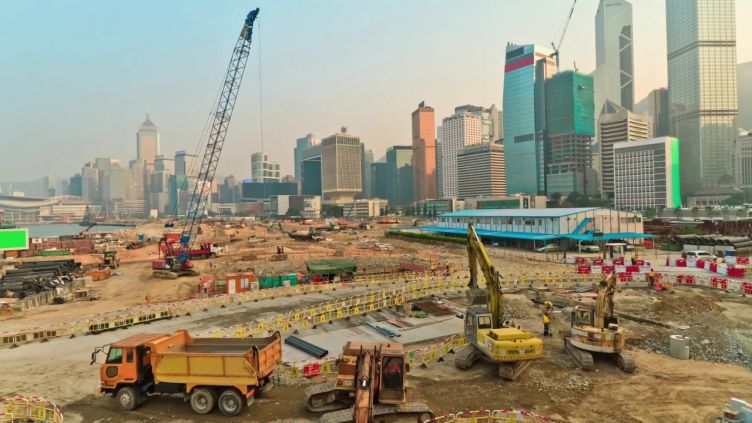Dr Zuhal Ozdemir
School of Mechanical, Aerospace and Civil Engineering
Lecturer in Structural Engineering


+44 114 222 5419
Full contact details
School of Mechanical, Aerospace and Civil Engineering
Room F121
Sir Frederick Mappin Building (Broad Lane Building)
Mappin Street
Sheffield
S1 3JD
- Profile
-
My work helps to protect structures and their inhabitants in the event of an earthquake, by ensuring construction regulations take into consideration the seismic response of buildings, and the correct mitigation measures are in place.
Dr Zuhal Ozdemir
Dr Zuhal Ozdemir obtained her PhD in 2010 from Kandilli Observatory (Turkey) and the University of Lille (France).
She then joined the Structural Mechanics Division of Katholieke Universiteit Leuven as a postdoctoral researcher. She joined our Department as a research associate, before becoming a Lecturer in 2012.
Over the past ten years she has worked on interdisciplinary research projects dealing with the dynamics of structures and materials.
Her main expertise is in earthquake engineering, nonlinear FEA (Finite Element Analysis), structural dynamics, high strain rate testing of materials and the static and dynamic behaviour of cellular solids.
- Research interests
-
One area of Zuhal’s research focuses on the assessment of the dynamic response of materials and structures under earthquake and impact loads using numerical methods.
She closely works with the members of our Blast Engineering Research group to conduct dynamic tests on materials to characterise their response under high amplitude and short duration loading conditions, and then she models the response numerically to validate experimental results.
She devises analytical solutions to develop simple design methodologies for materials when subjected to high dynamic loads. This work is applied in earthquake and impact engineering; in earthquake events, buildings can be subject to seismic pounding, which can cause serious damage to the structures and pose danger to inhabitants.
Zuhal numerically models this kind of impact response so that building regulations can be written to define the distances between structures, and mitigation techniques can be suggested.
Zuhal also researches the behaviour of irregular structures with complex geometries in plan and elevation. Irregular structures like L or T-shaped buildings have more damage potential than the regular, symmetrical ones, so Zuhal’s work helps to suggest building code recommendations about the influence of irregularities on the seismic response of buildings, and what kind of mitigation guidelines should be implemented.
- Publications
-
Journal articles
- A probabilistic liquefaction hazard analysis: case studies from the Marmara region. Geotechnical and Geological Engineering, 43(2). View this article in WRRO


- Co-seismic and rainfall-triggered landslide hazard susceptibility assessment for Uganda derived using fuzzy logic and geospatial modelling techniques. Natural Hazards, 120(15), 14049-14082. View this article in WRRO


- Transient computational homogenisation of one-dimensional periodic microstructures. Computational Mechanics, 74(6), 1303-1318. View this article in WRRO


- Probabilistic seismic hazard assessment framework for Uganda: a stochastic event-based modelling approach. Bulletin of Earthquake Engineering, 22(5), 1539-1579. View this article in WRRO


- Probabilistic seismic risk assessment framework: case study Adapazari, Turkey. Bulletin of Earthquake Engineering, 21(7), 3133-3162.


- Spatial and temporal averaging in the homogenisation of the elastodynamic response of periodic laminates. European Journal of Mechanics - A/Solids, 100.


- Time domain homogenisation of elastic and viscoelastic metamaterials. Mechanics of Time-Dependent Materials.


- Accurate prediction of cyclic hysteresis behaviour of RBS connections using Deep Learning Neural Networks. Engineering Structures, 247, 113156-113156.


- Development of more accurate cyclic hysteretic models to represent RBS connections. Engineering Structures, 245, 112899-112899.


- More efficient design of reduced beam sections (RBS) for maximum seismic performance. Journal of Constructional Steel Research, 183, 106728-106728.


- Seismic performance evaluation of deficient steel moment-resisting frames retrofitted by vertical link elements. Structures, 26, 724-736.


- A practical probabilistic earthquake hazard analysis tool: case study Marmara region. Bulletin of Earthquake Engineering, 18(6), 2523-2555. View this article in WRRO


- Energy absorption in lattice structures in dynamics: Nonlinear FE simulations. International Journal of Impact Engineering, 102, 1-15. View this article in WRRO


- Energy absorption in lattice structures in dynamics: Experiments. International Journal of Impact Engineering, 89, 49-61. View this article in WRRO


- On backward dispersion correction of Hopkinson pressure bar signals. Philosophical Transactions of the Royal Society A: Mathematical, Physical and Engineering Sciences, 372(2023), 20130291-20130291.


- Numerical evaluation of the dynamic response of pipelines to vibrations induced by the operation of a pavement breaker. Soil Dynamics and Earthquake Engineering, 44, 153-167.


- Numerical evaluation of nonlinear response of broad cylindrical steel tanks under multidimensional earthquake motion. Earthquake Spectra, 28(1), 217-238.


- Neural networks approach for characterisation of viscoelastic polymers. Canadian Journal of Chemical Engineering, 89(5), 1303-1310.


- Neural networks approach for characterisation of viscoelastic polymers. Canadian Journal of Chemical Engineering.


- A refined formula for the allowable soil pressure using shear wave velocities. Open Civil Engineering Journal, 5(1), 1-8.


- Allowable bearing pressure in soils and rocks through dynamic wave velocities. Soil Mechanics and Foundation Engineering, 47(4), 143-152.


- FSI methods for seismic analysis of sloshing tank problems. Mecanique Et Industries, 11(2), 133-147.


- Application of nonlinear fluid-structure interaction methods to seismic analysis of anchored and unanchored tanks. Engineering Structures, 32(2), 409-423.


- Seismic technique to determine the allowable bearing pressure in soils and rocks. Wit Transactions on the Built Environment, 104, 253-263.


- Seismic technique to determine the allowable bearing pressure for shallow foundations in soils and rocks. Acta Geophysica, 57(2), 400-412.


- Allowable bearing capacity of shallow foundations based on shear wave velocity. Geotechnical and Geological Engineering, 24(1), 203-218.


- Seismic amplification at Avcilar, Istanbul. Engineering Structures, 24(5), 661-667.


- Seismic amplification at Avcilar, Istanbul. International Journal for Housing Science and Its Applications, 26(1), 1-14.


Book chapters
- Modelling of earthquake hazard and secondary effects for loss assessment in Marmara (Turkey) In Durrani T, Wang W & Forbes S (Ed.), Geological Disaster Monitoring Based on Sensor Networks (pp. 67-81). Springer Singapore View this article in WRRO


- Numerical Simulation of Liquid Sloshing in Tanks, Computational Methods in Applied Sciences (pp. 49-79). Springer International Publishing


- A refined formula for the allowable bearing pressure in soils and rocks using shear wave velocities, WIT Transactions on State of the Art in Science and Engineering (pp. 233-247). WIT Press


Conference proceedings
- Effect of FRP Strengthening Intervention on the Seismic Fragility of Substandard RC Buildings (pp 915-924)


- A Situational Awareness Framework for Improving Earthquake Response, Recovery and Resilience. 16th World Conference on Earthquake Engineering, 9 January 2017 - 13 January 2017.


- Analysis of substandard RC buildings strengthened with an innovative post-tensioned metal strapping technique. 16WCEE 2017, 9 January 2017 - 13 January 2017.


- Numerical evaluation of the dynamic response of pipelines to vibrations induced by the operation of a pavement breaker. Advances in Environmental Vibration Proceedings of the 5th International Symposium on Environmental Vibration Isev 2011 (pp 808-815)


- A numerical model for the prediction of the response of pipelines due to vibrations induced by the operation of a pavement breaker. Proceedings of the 8th International Conference on Structural Dynamics Eurodyn 2011 (pp 928-935)


- Case studies: A rapid technique to determine allowable bearing pressure. Geotechnical Special Publication(175) (pp 66)


Digital content
- Website for RCUK-TUBITAK project on "Rapid Earthquake Risk Assessment and Post-Earthquake Disaster Management Framework for Substandard Buildings in Turkey".


- Website for British Council-TUBITAK project on "Post-earthquake Disaster & Risk Management through a Rapid Response Framework for Industrial Zones in Turkey".


Preprints
- Co-seismic and rainfall triggered landslide hazard susceptibility framework for Uganda derived using fuzzy logic and geospatial modelling techniques, Springer Science and Business Media LLC.


- A probabilistic liquefaction hazard analysis: case studies from the Marmara region. Geotechnical and Geological Engineering, 43(2). View this article in WRRO
- Research group
-
Concrete Structures
Blast & Impact
Earthquake Engineering Group
- Grants
- Professional activities and memberships
-
- Eiffel excellence scholarship of the French Ministry of Foreign and European Affairs 2008 - 2009.
- Co-investigator of two Newton Fund projects
- PhD opportunities
If you're interested in a PhD project, please contact Zuhal at the above email. Current PhD opportunities in the department can be viewed here.

